| Getting your Trinity Audio player ready... |
Have you ever wondered why you keep reading content on some websites for hours while others put you under eye strain after a few minutes?
The answer is font! Website designers spend hours choosing the right font, typefaces, point sizes, line lengths, letter spacing, font height, and font-weight for each web page. Typography is the art and technique of arranging letters and words to make written content understandable, readable, and visually attractive.
Many factors are crucial in choosing a font for a website and its pages. So, it is important to study every factor carefully before choosing a font for your next website.
The amount of effort you give in each of these typographic disciplines is ultimately determined by the nature of your project. Web designers, for example, must pay great attention to color, graphics, and other design components to create visually appealing web pages.
But why is typography important in web design, and how do you check your favorite website using which fonts?
Stick with us, and the answer will become clear!
What Makes Typography Essential for Web Design?
Typography is an important aspect of web design since it influences both the user experience and the readability of a website. Fonts, spacing, and layout must be carefully chosen for user-friendly websites to produce visually appealing and readable information.
Now that you understand how typography elements affect website design, let’s look at the main benefits of using good typography in your web design strategies:
Also Read: How You Can Find Bugs In Websites Manually?
➢ Making Website Content Legible
The main goal of typography in web design is to make all website content look interesting and easy to read. Once you capture interest, the right font, typeface, color, and other typography elements can make the content legible to users.
Engaging users and keeping them browsing longer is easier when the content is interesting and easy to read.
Also Read: What Should You Consider When Developing Website Content?
➢ Building Brand Identity
Effective typography helps web designers create and reflect a strong brand identity for the website. Designers can carefully select fonts and typefaces that represent the brand’s values. They can adjust the design hierarchy to create a harmonious visual experience.
Maintaining typographic consistency across the design reinforces the brand message. In short, typography is an important brand-building tool that helps businesses make memorable impressions.
Also Read: Brand Strategy Vs Marketing Strategy – Know The Difference
➢ Boosting Accessibility
Additionally essential to enhancing a website’s accessibility is effective typography. Using whitespace wisely, selecting readable fonts, and utilizing other typographic strategies can greatly increase the accessibility of any website to all users.
Also Read: Which Functions Are The Important On A Website?
Methods to Find Fonts From Website
Designers and developers may find that choosing the appropriate typeface for a website is crucial when trying to mimic a specific style or uphold brand consistency. These are a few efficient techniques for identifying fonts on web pages, which include both automated tools and human methods.
➢ By Inspecting Element Tool
The Inspect Element feature, included with most modern browsers, is one of the simplest ways to identify a typeface on a webpage. Here’s how to do it:
➔ Right-click on the text whose font you want to identify, then choose ‘Inspect’ from the context menu.
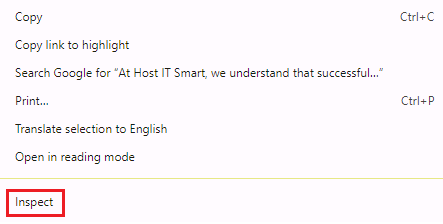
➔ The developer tools panel will appear, highlighting the HTML element you selected.
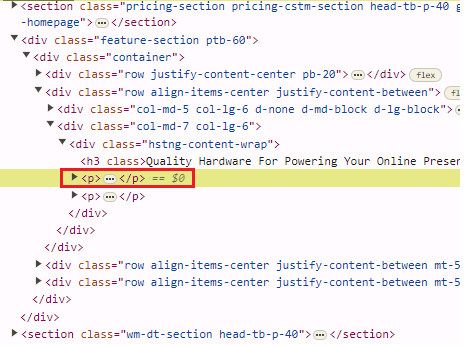
➔ Look for the ‘Styles’ tab or pane, where you can see the CSS rules applied to the element.

➔ Find the ‘font-family’ property. This will show you the font name used for that particular text.

Also Read: How To Find All Pages On A Website?
➢ By Source Code
If you prefer a more direct approach, you can view the source code of the webpage:
➔ Right-click on the page and select ‘View Page Source’ or press ‘Ctrl+U’ (Cmd+U on Mac).
➔ Search for the <style> tags or linked CSS files. You can do this by pressing ‘Ctrl+F’ (Cmd+F on Mac) and typing ‘fonts’

➔ The search results will highlight the instances where fonts are defined, giving you an overview of the fonts used throughout the site.

Also Read: 5 Best Website CMS Detector Tools You Must Try
Automated Tools to Identify Fonts
For those who prefer automated solutions, several online tools and browser extensions can quickly identify fonts used on a website, such as:
1. WhatFont
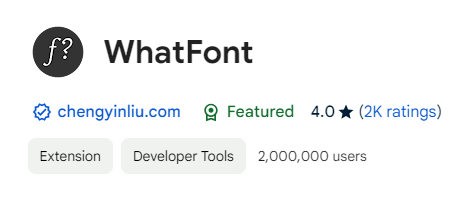
➔ WhatFont is a popular browser extension that is available for Chrome and Safari.
➔ Once installed, click the WhatFont icon in your browser’s toolbar.

➔ Hover over any web page text, and WhatFont will display the font name, size, and other details.
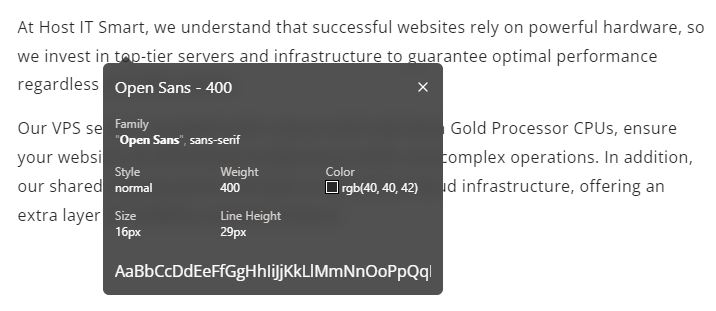
2. Fontanello
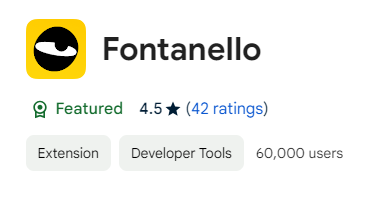
- Fontanello is another useful browser extension that provides detailed font information.
- After installation, right-click on the text and select “Fontanello” to see the font family, weight, size, and line height.
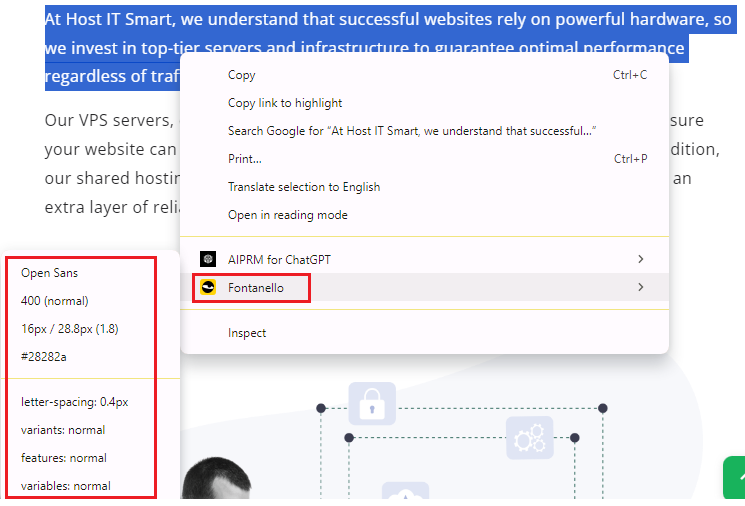
Also Read: How Can You Make A Website Look More Professional?
Final Take
Identifying fonts from a website is easier than ever, thanks to a combination of manual methods and automated tools. Whether you prefer using the Inspect Element tool, viewing the source code, or leveraging browser extensions and mobile apps, there are numerous ways to discover the fonts that capture your interest.
These methods help you ensure design consistency and inspire your own web projects.




